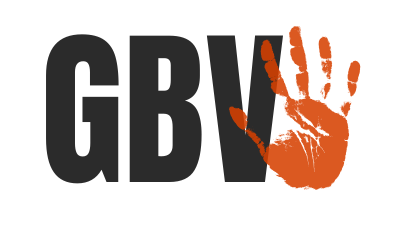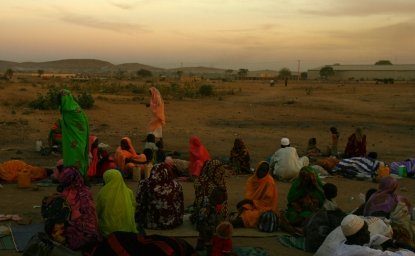The death last week of a young woman at the hands of Iran’s Morals Police raises a simple question: How many more Iranian women have to die, be subjected to brutality, torture, imprisonment and coerced confessions before the authorities give up trying to enforce the mandatory observance of the hijab? How many more women will be victimized because of what they choose to wear, the length of their robes, their makeup and nail polish? And how much longer will women’s freedom be sacrificed before the leaders and government of the Islamic Republic’s obsession with women’s looks and appearances finally is sated?
Within hours [Mahsa Amini]'s unconscious body was transported to a local hospital; two days later, she was pronounced dead.
This obsession’s latest victim is 22-year old Mahsa Amini from Saqqez, in Iranian Kurdistan. Mahsa was visiting Tehran with her family. On September 13, she was stopped outside a metro station by the notorious Gasht-e Ershad, or Morals Police, for allegedly violating the hijab dress code. She was forced into a van and driven to the office of the Gasht. Within hours her unconscious body was transported to a local hospital; two days later, she was pronounced dead.
The official version put out by the Morals Police is that Mahsa had heart problems and was rushed to a hospital after suffering a heart attack. But the hospital attributed her death to, “cardiac arrest as a result of brain death,” meaning she was brain dead when she was brought to the hospital. Her family immediately rejected the Morals Police’s claims; her father said Mahsa did not suffer from a heart problem or seizures; and reports circulated on social media, citing eye-witnesses, that Mahsa collapsed after she was hit on the head while in the van and her head was slammed against the van wall, causing her to collapse.
Students, athletes, shopkeepers, men and women from all walks of life joined protest demonstrations that have been growing every day in most cities in Kurdistan, and also in Tehran, Karaj, Isfahan, Rasht, Tabriz, Mashhad...
Widespread protests have followed Mahsa’s death. The social media have gone viral, and Facebook and Twitter have been full of pictures and comments about yet another life taken because of the hijab. Over one thousand people gathered for her funeral in her hometown, Saqqez, on September 17. Students, athletes, shopkeepers, men and women from all walks of life joined protest demonstrations that have been growing every day in most cities in Kurdistan, and also in Tehran, Karaj, Isfahan, Rasht, Tabriz, Mashhad, the Island of Qeshm in the Persian Gulf and even the city of Qom, the bastion of the clerical Community. In almost all protest marches, women were in the front rank; as the demonstrations were spreading. Slogans by the demonstrators were aimed at the Supreme Leader, Ayatollah Khamenei, himself. Although in recent days he gave two speeches, Khamenei has not yet commented on the incident. Among the slogans: “Justice, freedom and voluntary hijab”; “This is our final message; our target is the system;" "we will fight, we will die, we will reclaim Iran”; and “Death to the Dictator”.
At the burial of Mahsa some women defiantly removed their hijab. Others, cut their hair in front of the camera, and posted their pictures online. A number of women followed the example of a woman in Rasht in north Iran who set fire to her headscarf. They too removed their scarves and added them to a bonfire. Prominent clerics, artists, intellectuals and former politicians continue to call for restraining, or even dismantling, the Morals Police and for women to be left alone.
...this was hardly the first time women were mistreated, beaten, and even died at the hands of the security services with no consequences for those responsible.
The authorities, clearly alarmed by boiling anger, have this time tried what might be called conciliation. President Raisi, who didn’t object to the most recent effort to enforce the hijab, called the family, offered condolences, and promised a thorough investigation. The head of the judiciary announced an investigation of what occurred in the van that transported Mahsa to the office of the Morals Police and that office itself. Some members of parliament suggested examining what happened. None of these assurances calmed the explosion of anger across the country; this was hardly the first time women were mistreated, beaten, and even died at the hands of the security services with no consequences for those responsible. An early indicator that this time will be no different: the family of Mahsa demanded to see the videos that were taken in the van, but the Morals Police claim their cameras were turned off.
Moreover, the security police, present in large numbers during the demonstrations, behaved as they have done in the past: according to reports, they used tear gas and water cannon to disperse the demonstrators; they made arrests; they even used arms. Several people were wounded. According to the BBC, in Divan-Dareh in Kurdistan alone at least ten demonstrators were wounded and two were killed. As of Wednesday night, the number of dead demonstrators had risen to seven, and several hundred people have been wounded. Unlike past protests, the demonstrators did not disperse and have continued to confront and fight the security forces. The government has slowed down the speed and access to the internet, and people are blocked from using hashtags.
Mahsa’s fate can befall any woman in Iran. After four decades of failure in imposing the hijab on Iranian women, it is time for Iran’s leaders to let women choose for themselves whether or not to cover their hair, wear a scarf or observe the full hijab. Otherwise, they may discover the business of the hijab, to which they have devoted so much attention and energy for the last forty years, will prove to be the Achilles Heel of the Islamic Republic.
This article was originally published on September 20 [2:45PM] and updated on September 22 [9:30AM].
The views expressed in these articles are those of the author and do not reflect an official position of the Wilson Center.









